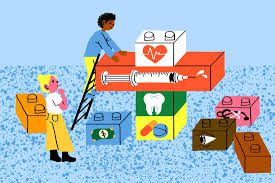What should a firefighter eat?
The Best Diet for Firefighters and Police
- The best diets and workout programs are the ones that fit best into our lifestyle.
- Whole Eggs: Eat whole eggs, not whites.
- Lean Meats: Chicken, turkey, lean cuts of pork (like tenderloin), beef, along with wild game (buffalo, venison, elk, ostrich, rabbit).
How many calories should a firefighter eat a day? Firefighting is a physically demanding occupation that may require 6,000 calories (kilocalories) per day. Firefighters who do not consume enough calories will become fatigued and lose body weight and muscle.
How many calories do firefighters eat? On a typical day, the average wildland firefighter should ingest up to 6,000 calories, including more than 700 grams of carbohydrates.
How healthy are firefighters? According to a National Institute for Occupational Safety and Health study, firefighters are more than twice as likely to be diagnosed with invasive cancer than the average person. Firefighters commonly come into contact with dangerous, cancer-causing materials when they fight a fire.
What should a firefighter eat? – Additional Questions
What are 5 risks of being a firefighter?
Fire fighters may develop:
- cancer, particularly genito-urinary (including kidney, ureter and bladder).
- back injuries and other strains.
- diseases such as AIDS and hepatitis.
- cardiovascular disease due to a multitude of toxic substances when fighting a fire.
What are the cons of being a firefighter?
Here are five cons that may accompany a firefighter’s job:
- Constant training. Firefighters undergo extensive and constant training throughout their careers.
- Long shifts.
- Dangerous job.
- Mentally demanding.
- Physically demanding.
Do firefighters have health problems?
Firefighters are susceptible to burns, smoke inhalation and crush injuries from collapsing structures. They can suffer from heat exhaustion, as well as long-term job-related illnesses such as asthma, persistent coughing, heart disease, cancer and lung damage.
What is the life expectancy of a fireman?
3. The life expectancy of a fire fighter aged 20–24 year at entry was 54.9 years, 2.7 and 2.8 years more in comparison to the German or Hamburg reference respectively. For a fire fighter aged 30–34 the advantage in life expectancy was 2.2 years compared to Hamburg and 2.4 years compared to Germany.
Is being a firefighter safe?
Firefighting is a dangerous profession, and a growing body of research and data show the contributions that job-related exposures have in chronic illnesses, such as cancer and heart disease, and in behavioral health issues that may end in suicide.
Do firefighters get COPD?
In a cohort of 29,992 US career firefighters, Pinkerton et al. found an increase in COPD mortality with increasing fire-hours (an exposure surrogate calculated based on job exposure matrices models), but mortality from COPD in the studied population was not elevated compared to the general population [37].
What are the long-term effects of being a firefighter?
Firefighters are at increased risk of cardiovascular disease, pulmonary disease, cancer, and noise-induced hearing loss. Occupational medical care for firefighters needs to monitor for these long-term health risks.
Can someone with asthma become a firefighter?
Asthma and COPD are classified as Category B medical conditions under NFPA 1582, Standard on Medical Requirements for Firefighters. Category B conditions mean that the severity of the health condition is the determining factor in ones’ ability to function as a fire fighter.
Do firefighters get lung disease?
Firefighters’ work exposure to toxic substances has resulted in an increased rate of chronic pulmonary and cardiovascular disease.
How stressful is fire fighting?
Those who combat fires — often referred to as “the brotherhood of firefighters” — constantly are exposed to a long list of dangers: exposure to smoke and hazardous chemicals, physical injury, risky rescue and recovery, cardiovascular events and intense emotional stress, Morman said.
Why do wildland firefighters not wear masks?
They are highly irritating to the mucous membranes. cause breathing problems, collapse, coma, and death when high levels are inhaled. Airborne particulates.
How unhealthy is wildland firefighting?
Some of the main health and safety risks associated with smoke and chemical inhalation while firefighting includes permanent lung damage, chronic bronchitis, abnormal lung function, lung cancer, and other respiratory illnesses.
Do firefighters inhale smoke?
What is in the air that firefighters breathe? There have been many studies about smoke dating back to the 1988 NIOSH project at the fires in Yellowstone National Park. Most of them confirmed that yes, wildland firefighters ARE exposed to smoke and in most cases they quantified the amount.
How many firefighters have depression?
Among the 112 firefighters in the sample, 89.2% (n=100) reported no depression, 10.8% (n=12) had some degree of depression (6.2% mild depression, 3.6% moderate depression, 1% severe depression), 59% (n=64) were sleep deprived (PSQI score =6.02±3.08, ESS score =5.22±2.84), 8% had poor physical well-being (n=9, PHC= 62%±
How many calories do wildland firefighters burn?
We all know that firefighters have to eat well and work out to perform their duties, but just how much energy do they exert fighting a fire like the 117 Fire? “They burn between 6,000 and 10,000 calories per day,” Michael Davis with the Elk Creek Fire Department said.
Is the Pack Test hard?
The arduous pack test is the most physically demanding of the three tests. It is designed to test the physical capabilities of firefighters who work in extreme temperatures, altitude, and rugged terrain.
Where do wildland firefighters sleep?
Because almost all wildland firefighters need to sleep either in fire camps or in spike camps, they sleep in tents, on the ground, and in hot, smoky, and dusty conditions. Shift work interferes with sleep, especially for those on night shift.
